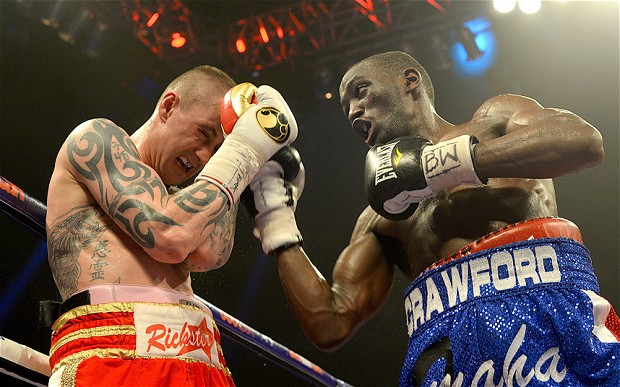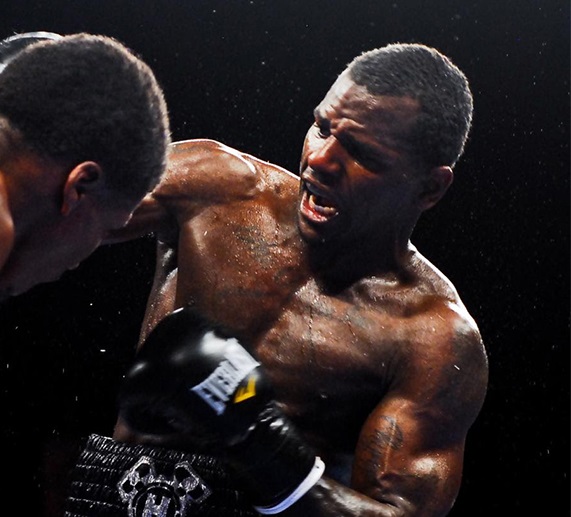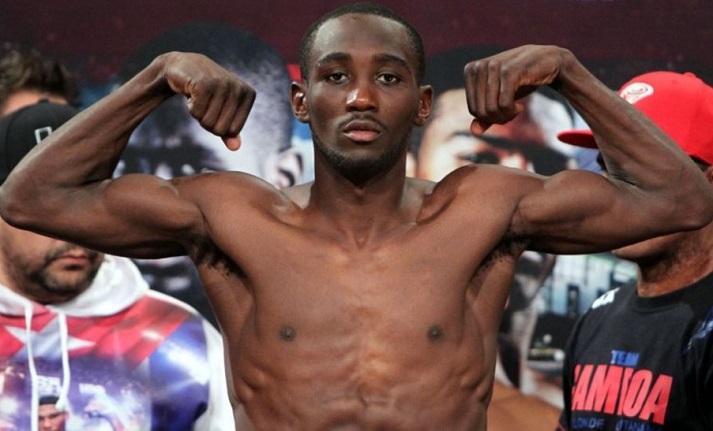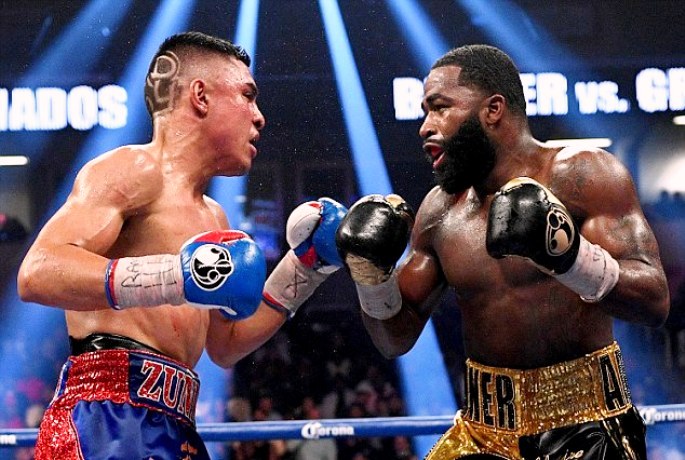Crawford: Omaha’s Own
When boxing “hotbeds” are discussed, there are a few American cities that get the bulk of the mentions such as Las Vegas and New York, and it’s safe to say the state of Nebraska never comes up. The home of the “Cornhuskers” is infinitely more known for its college football prowess than for producing elite fighters. However, one name that is raising boxing’s profile in Omaha, Nebraska is Terence Crawford. Undefeated, already a two-weight world champion, and with a passionate hometown fan base behind him, this sharp switch-hitter is quickly becoming a major star in the sport.
Crawford’s rise began in earnest when he made his HBO debut in 2013 by beating Breidis Prescott on short notice to move his record to 20-0. He proceeded to TKO Alejandro Sanabria in six rounds, and followed that with a decision win over Andrey Klimov. Those victories earned him a shot at the lightweight belt held by Scottish native Ricky Burns and Crawford had to travel to his opponent’s backyard in Glasgow for his first title opportunity. Winning a world title is a daunting task in any case, but having to do so on the champion’s turf makes it even tougher when there’s always the danger of a hometown decision. Crawford had to be dominant to get the victory and he was, outclassing the Scotsman en route to a unanimous points win.

But it was Crawford’s next fight in June of 2014 that was his real “coming out” party. He took on undefeated Cuban powerhouse Yuriorkis Gamboa, an offensive dynamo with elite handspeed and punching power. While Gamboa had been largely inactive leading up to that showdown, and was also moving up in weight, he was still regarded as the biggest challenge yet for Crawford, who went on to show he is the type of fighter who brings his best when the lights are the brightest. In front of his rabid fans at the CenturyLink Center in Omaha, Crawford rebounded from a tough start to pick Gamboa apart, scoring four knockdowns and finally stopping the Cuban in round nine.
Especially impressive was Crawford’s ability to handle adversity. He clearly lost the first few rounds as he was hit repeatedly by Gamboa’s fast-twitch strikes, but despite falling behind, he showed no signs of frustration. Cool, calm and collected, Crawford then made some key adjustments and by round five he had taken full control of the contest. After absorbing some savage punishment in round nine, Gamboa could take no more and the match was halted.
Making this performance even more special was the fact Crawford demonstrated he is an excellent finisher. While he had stopped many opponents early in his career, this trend ended once he started facing stiffer competition. His wins over Prescott, Klimov, and Burns were all decision victories, and while he had largely dominated them, he hadn’t shown the ability to finish inside the distance. In viciously stopping Gamboa, he unveiled his killer instinct and this facet of Crawford’s game was far from a fluke or outlier, as he would come to prove.
Five months after the star-making performance against Gamboa, Crawford defended his lightweight title against Ray Beltran, winning by a wide decision in front of his Omaha fans. This would be his last fight at lightweight and his final outing of 2014, a year which marked a major step forward for Crawford and earned him the Fighter of the Year award from the Boxing Writer’s Association of America.
In his first outing of 2015, Crawford moved up to the super-lightweights to take on Thomas Dulorme, who was 22-1 at the time and riding a six fight win streak. While Crawford was the clear favorite going in, he still managed to impress. He took a few rounds to figure out his opponent, but then assumed full control and scored two knockdowns before forcing a stoppage in round six.
His ability to calibrate his opponent’s movements and tendencies, all while making minute adjustments, make me think of Crawford as an elite computer processor. He gathers data early on, makes the necessary adjustments and then produces a destructive and violent response. That same computing process was evident in his most recent beating of Montreal’s own Dierry Jean. He showed his superiority by outlanding Jean, hitting him with clean counter shots throughout the contest. In the tenth, after a hard flurry from Crawford, Tony Weeks called it off, giving Crawford another stoppage victory to his name.

Next up for Crawford is Hammerin’ Hank Lundy this Saturday night at the Theater at Madison Square Garden. This match was not Crawford’s original wish, as he had his sights set on a megafight with superstar Manny Pacquiao but in the end, Bob Arum decided to make Pacquaio-Bradely III, a very unnecessary rubber match. Lundy is a scrappy Philadelphia fighter with some speed and athleticism and who always comes to fight, but the bottom line is he has suffered defeat in his biggest fights, his record showing losses to John Molina Jr, the aforementioned Ray Beltran and Thomas Dulorme, as well as Viktor Postol and Mauricio Herrera. With this in mind, it’s difficult to imagine this match ever going Lundy’s way. Terence Crawford is simply too skilled, too sharp and too smart to not come away with the victory.
If Crawford can handle his business on February 27 as most expect, there should be much bigger fights coming his way in the near future. He is undoubtedly a top 10 pound-for-pound talent right now, and is only getting better. Being one of the brightest young stars in the game, and just entering his prime, he truly has his whole future ahead of him and there is no telling how high his stock will rise. So next time you hear Omaha being mentioned in boxing circles, don’t be surprised. Terence Crawford has put that city on the boxing map and it look like it’s going to stay there for some time to come.
— Jamie Rebner






Great article, love to hear about the up and comers
Mega excited for tonight